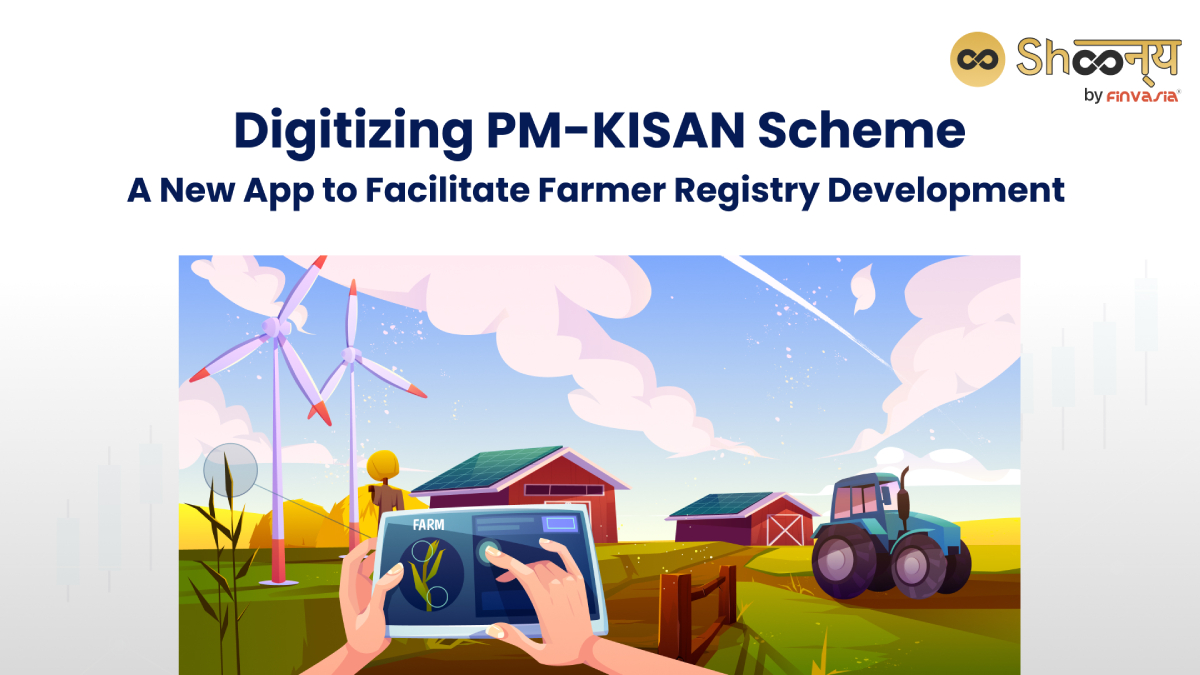PM-KISAN Scheme: India Launches Farmer Verification and Digital Enrollment App to Expand Beneficiary Reach

In a proactive move to ensure the inclusivity of all eligible farmers in the Pradhan Mantri Kisan Samman Nidhi (PM-KISAN) scheme, the Indian government has initiated an extensive saturation drive, addressing grievances and concerns voiced by farmers. The PM-KISAN initiative, which was set in motion on December 1, 2018, with the objective of offering annual income support to land-holding farmer families, has encountered challenges related to exclusions. In response to these issues, the government is taking concrete steps to verify and digitally enrol farmers in the program.
PM Kisan Nidhi Scheme
The PM Kisan scheme, initiated by the central government, provides income support of Rs. 6,000 per year to landholding farmer families in three equal instalments. This financial aid aims to assist farmers in procuring necessary resources and ensuring a healthy crop yield. Launched in December 2018, the scheme has already benefited over 11 crore farmers.
PM Kisan Scheme Eligibility
To be eligible for the PM Kisan scheme, farmers must meet specific criteria:
- They should be Indian citizens and engaged in farming.
- They or their family members should not have paid taxes in the previous assessment year.
- The agricultural land should be used solely for farming purposes.
- They should qualify as small and marginal farmers, meaning they own up to 2 hectares of cultivable land.
The following categories of beneficiaries are excluded from the PM Kisan scheme:
- Institutional landholders.
- Farmer families belonging to specific categories, such as former and present holders of constitutional posts, ministers, state ministers, members of parliament, state legislatures, and more.
- Serving or retired officers and employees of central or state government bodies, public sector enterprises, autonomous institutions, and local bodies.
- Professionals like doctors, engineers, lawyers, and chartered accountants, registered with any professional body.
- Retired pensioners with a monthly pension exceeding Rs. 10,000.
- Individuals who paid income tax in the last assessment year.
Inclusivity Drive Gains Momentum
Despite the scheme’s tenure and purpose, farmers continue to express concerns about their exclusion from PM-KISAN. The primary reasons cited for this exclusion are discrepancies in the farmer’s land details compared to the state’s land record system and incomplete e-KYC procedures. Recognizing these issues, the government is committed to expanding the reach of the PM-KISAN scheme to encompass more beneficiaries.
However, it is important to note that due to predefined exclusion criteria within the operational guidelines, achieving 100% saturation may remain a challenging goal.
PM Kisan Samman Nidhi Scheme: Leveraging Technology for Inclusion
To address these challenges, the Ministry has developed an IT system that automates the saturation process, reducing the need for farmers to submit extensive documentation to access PM-KISAN benefits.
A pivotal element in this initiative is the introduction of the PM-KISAN Mobile App, designed to enable digital registration and facilitate the creation of comprehensive farmer registries in each state.
How to Apply for the PM Kisan Scheme
Farmers have the flexibility to apply for the PM Kisan scheme through both online and offline channels.
They can visit the official PM Kisan website or approach their nearest Common Service Centres (CSCs) for online applications.
For online applications, farmers should follow these steps
• Select their preferred bank to receive PM Kisan benefits.
• Visit the chosen bank’s website or access the PM Kisan portal (http://www.pmkisan.gov.in/).
• Opt for the Kisan credit card or new farmer registration from the provided options.
• Click on the ‘Apply’ button and complete the necessary information on the application page.
• Upload scanned copies of essential documents like the Aadhaar card, land records, and bank account details.
• Submit the application form and make a note of the reference number for future use.
As per the new app, the registration and verification process will include the farmer’s consent through e-sign (Aadhaar-based) and e-KYC, which can be carried out through facial recognition or OTP authentication.
Plans are also underway to incorporate fingerprint-based (biometric) authentication within the app. This digital approach ensures the efficient verification and enrollment of farmers into the PM-KISAN Nidhi scheme while simultaneously building a valuable farmer registry for future applications.
Expanded Benefits and Applications
These state-specific farmer registries will have a multitude of applications, such as simplifying access to crop loans, facilitating the distribution of Kisan Credit Cards (KCC), and streamlining the procurement of agricultural produce at Minimum Support Prices (MSP), among others.
Initially, the saturation drive will be piloted in seven states, with the government’s long-term goal of scaling up the PM-KISAN saturation drive across the entire country, particularly in light of the approaching state elections.
Bridging the Gap
Notably, there exists a substantial gap between the number of land-owning farmers in India and the current PM-KISAN database. While there are approximately 9.5 crore land-owning farmers, the PM-KISAN database currently covers 8.75 crore beneficiaries.
Earlier this month, CNBC-TV18 reported that the Central government has realised significant savings of ₹10,000 crore in the last year through the PM-KISAN scheme. These savings primarily resulted from the removal of around 1.72 crore beneficiaries who were found to be ineligible, underscoring the importance of this drive for more accurate and inclusive coverage.
Conclusion: Digitalisation Driving the Growth
The expansion and enhancement of the PM-KISAN scheme, with its focus on verifying and digitally enrolling farmers, have several significant implications for the Indian economy. Firstly, it can lead to a more targeted and efficient distribution of financial support to land-holding farmer families, which in turn can improve their livelihoods. This, in the long run, could boost rural income and reduce poverty, ultimately contributing to increased domestic consumption.
These improvements can enhance agricultural productivity and income, benefiting both farmers and the broader economy.
Source-
______________________________________________________________________________________
Disclaimer: Investments in the securities market are subject to market risks; read all the related documents carefully before investing.








